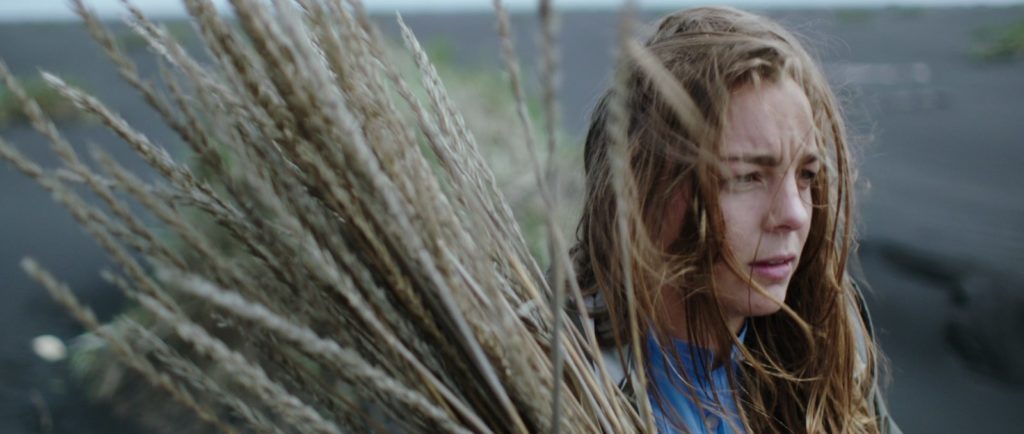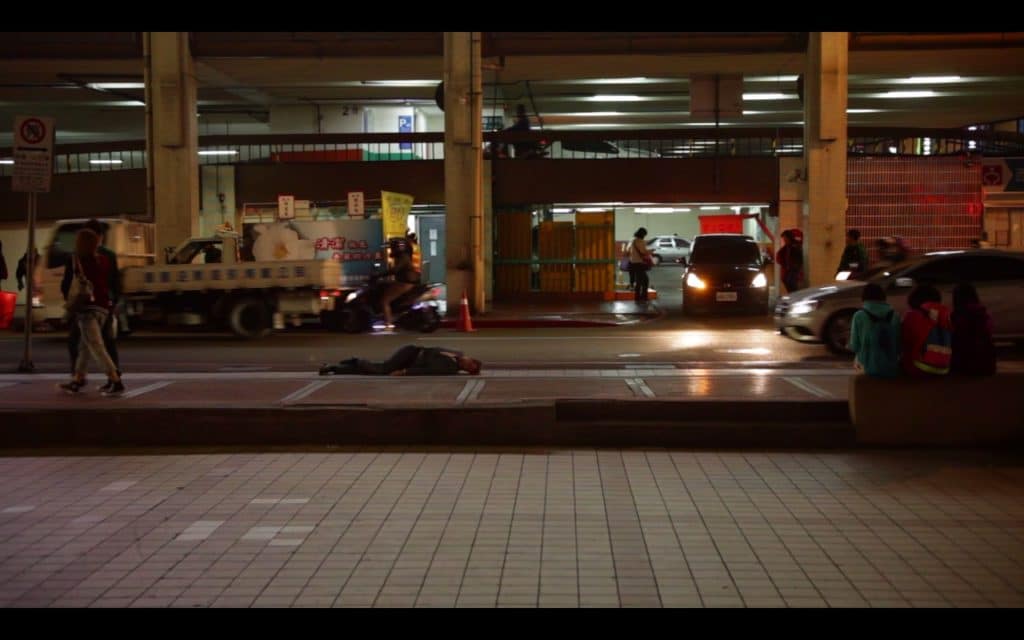The dance film occupies a unique place among the film offerings. Not driven purely by psychologising or text, it offers every opportunity for experimentation in form and content. But that also means it is difficult to place. And therefore difficult to make.
The second part on the growing pains of the dance film features 2 dancers and performance artist. I spoke to Jorijn Vriesendorp, Joseph Simon and Karel van Laere about what they encounter in making their films. They approach film from a different discipline, used to very different budgets and making processes. Where a film producer starts thinking from a hundred thousand euros, here we already come a long way with a few percent of that, a lot of love, good friends and crowdfunding. But you can't keep that up forever.
For an apple and an egg
Jorijn Vriesendorp earned her spurs as a dancer and actress with Chunky Move in Australia and various companies in Germany such as the Schaubuhne in Berlin. Meanwhile, she has set her heart on dance film and would prefer to devote herself to it completely. And rightly so. With minimal resources, she has already made two films of her own. While she waits is the short film she made during her pregnancy. She applied to the AFK for a limited budget. There, they said the plan rattled a bit but also understood that if you wanted to make a film while pregnant, there is quite a time limit.
As with Landbrot, which was shown at the last Cinedans festival, everyone wanted to participate in it for the love of the project. No one got a decent day's pay. The card of 'working with friends' has now been played out. She can't do that again. And to crowdfunding is also subject to a limit, you can only touch that twice as well. Until now, she had not delved very deeply into the funds, but that will have to change now.

Dance maker Joseph Simon actually made a dance film by accident. He was researching the plié, to what you could do with that. And then figured out that he needed a camera to do more. Fortunately, Dansateliers in Rotterdam supported him and made it possible for him to shoot for a few days. There he found out that filmmaking really is a completely different profession. His film is very DIY came about, with the help of friends. He showed them something of his urban background, they helped him with editing. As with Jorijn, that worked, but to take the next step, it really takes more.
The frustrating journey past the funds
Preeminently multidisciplinary is Karel van Laere. He did the performance course in Maastricht, something very different from the drama academy it is part of. He makes performances, documents them and also creates installations. He himself sees his work as visual art rather than dance film, stronger: he never intended to make a dance film. Yet Martine Dekker selected his first film SLOW for Cinedans, where it promptly won the audience award. In SLOW, van Laere drags himself on a tightrope through Taipei. It is a beautiful reflection on the vulnerability of the human body, but also on the body in the city and public space. A surprisingly layered work for a young maker.
His work did not get off the ground without a hitch. For the Mondrian Fund, he had the wrong education, although performance is more related to visual art than theatre. Perhaps one day he could go back there for an application when he does the Rijksakademie. With Fonds Podiumkunsten, however, he could not initially apply either. "Only once I was able to make it clear what kind of area I'm moving into with my work could I go to both the Stimuleringsfonds and Het Fonds Podiumkunsten after a somewhat frustrating journey. From the Performing Arts Fund I received a 'New Makers' grant between 2017 and 2019 for which I am very grateful to them." Now that he is an internationally recognised artist, he himself was once able to propose someone to the Stimulation Fund who was in danger of falling between the cracks.

Of this company, Karel is the only one now working on large projects with ditto budgets. Currently, he is developing an installation for Sloterdijk Station. He is very happy to be able to pay everyone. Still, he sees great benefit in the small pots at the funds. "That's what makes innovation possible and allows young makers to get started. And even sometimes big budgets can hold you back. At the academy, you don't learn to think in large amounts, you really have to learn that."
What could be better
What all three have in common is that they would like more support from the funds. Feedback on plans, but also on accountability. You often put a lot of time into a good application and it is very frustrating if it is not read for formal reasons. But also afterwards: what actually happens to the justification? Does someone actually read it, or does they just look at the figures? It would be nice to hear something back about what you have done and achieved.
Karel does see a glimmer of hope: there is now someone at the funds who is rescuing projects that are at risk of falling by the wayside but have quality.
Joseph would like specific feedback on how dancers and filmmakers can work with each other. "Sometimes you get feedback from the funds, but it would be good if creators were supported or pushed a bit more to think about how the two disciplines interact. Maybe the maker has too little knowledge to express themselves well, but has a really good idea."
His advice to makers is to think things through carefully, plan, be more precise in organisation. He approached his film from his research. The film people he worked with asked where his script was. Joseph threw himself into this project without a film background and learned from it that it is important to think practically as well. Maybe funds can understand that and dance makers can understand that they need to get more specific.
Karel sees a lot in talking to the funds in person. He too sees that some, especially novice creators, may be too vague in their applications. In a conversation, it is easier to judge whether someone is inexperienced in applications or does not yet have a sufficiently thought-out plan.
Can we have Point Taken back?
Jorijn would prefer Point Taken or something similar in return. This was a project by NPO and Cinedans, with money from the Media Fund and Performing Arts Fund. A choreographer and a filmmaker were paired up to make a short film together. Collaboration between disciplines on a professional level with professional resources. That on right there is money somewhere. "If you were to calculate While She Waits and Landbrot by what it really costs if you paid your crew and cast, you would find these films very difficult to get funded."
Until now, she got away with crowdfunding and small amounts of money. Recently, a collaborative project came to a halt, where everyone collaborated for nothing, because they love dance film. The administration fees for the music rights turned out after the edit to be disproportionate, while the artist was happy to work on it. And yet they do want to go ahead with it, they want to see what funds there are and how to get people excited about it.
There really is plenty of talent in this country. And there are plenty of ideas. What Martine Dekker said in the first part: support is needed, though. Film producers do know their way around, and so do many filmmakers. There, the need is mainly for more room for experimentation. On this side, the dance makers' side, there is mainly a need for a bit more coaching from the funds. The structure for dance makers is looser than that in film. The chance of getting lost is greater. The experiment is fine. Now we need the preconditions.
